
QUALITY AND RELIABILITY ENGINEERING INTERNATIONAL
Scope & Guideline
Transforming Challenges into Reliable Solutions
Introduction
Aims and Scopes
- Quality Control and Statistical Process Monitoring:
Focus on the development and application of statistical methods, such as control charts (CUSUM, EWMA, Shewhart), for monitoring and improving process quality in various industries. - Reliability Engineering and Life Testing:
Emphasis on methodologies for reliability analysis, including life testing, failure mode and effects analysis (FMEA), and stochastic modeling to predict system performance and longevity. - Maintenance Optimization and Strategies:
Research on optimization of maintenance policies, including condition-based and predictive maintenance, to enhance system reliability and reduce downtime. - Data-Driven Approaches and Machine Learning:
Integration of machine learning techniques for predictive analytics in reliability and quality engineering, utilizing big data and advanced computational methods. - Systems Reliability and Safety Engineering:
Exploration of reliability modeling for complex systems, including multi-state systems and those subject to competing risks and uncertainties. - Risk Assessment and Management:
Focus on quantitative risk assessment methodologies, including Bayesian inference and probabilistic models, to support decision-making in quality and reliability.
Trending and Emerging
- Integration of Machine Learning and AI in Reliability:
A significant increase in research integrating machine learning and artificial intelligence into reliability engineering, focusing on predictive modeling and real-time analytics for system performance optimization. - Data-Driven Maintenance Strategies:
Emerging themes around data-driven maintenance strategies, particularly condition-based and predictive maintenance, are gaining prominence as industries seek to enhance equipment reliability while minimizing costs. - Advanced Statistical Methods and Hybrid Approaches:
There is a noticeable trend towards the development of advanced statistical methods and hybrid approaches that combine classical statistical techniques with modern computational algorithms to improve process monitoring. - Focus on Cyber-Physical Systems and IoT Reliability:
Growing research interest in the reliability of cyber-physical systems and the Internet of Things (IoT), addressing the unique challenges posed by these interconnected systems in terms of reliability and quality. - Sustainability and Environmental Considerations in Reliability:
An emerging focus on sustainability and environmental impact in reliability engineering, reflecting the increasing importance of eco-friendly practices and lifecycle analysis in engineering decisions.
Declining or Waning
- Traditional Statistical Methods without Modern Adaptations:
There appears to be a decline in the use of traditional statistical methods that do not incorporate modern adaptations or machine learning techniques, as newer, more sophisticated methods gain traction. - Overemphasis on Single-Factor Analysis:
Research focusing on single-factor analyses in reliability and quality engineering is becoming less common, with a shift towards more complex, multi-dimensional approaches that consider multiple interacting variables. - Reduction in Classic Reliability Testing Methods:
Classic reliability testing methods, which may not leverage current advancements in technology or data analytics, are being overshadowed by innovative methodologies that incorporate real-time data and predictive analytics. - Declining Interest in Non-Statistical Approaches:
There seems to be a decreasing trend in the publication of papers focused solely on non-statistical approaches to quality and reliability, as the field increasingly embraces quantitative methods and data-driven decision-making.
Similar Journals

International Journal of Prognostics and Health Management
Pioneering Knowledge in Health Management and Engineering DisciplinesThe International Journal of Prognostics and Health Management (IJPHM), published by the PHM Society, is a leading academic journal dedicated to the interdisciplinary fields of engineering, safety, and risk management. With an ISSN of 2153-2648, this open-access journal has been disseminating pioneering research since its inception in 2010, enabling accessibility to vital advancements in prognostics and health management practices. The journal is recognized for its rigorous peer-reviewed articles, currently holding a prestigious Q2 ranking in multiple categories including Mechanical Engineering and Safety, Risk, Reliability and Quality, along with a Q3 ranking in Civil and Structural Engineering, Energy Engineering and Power Technology, and Computer Science. The journal's commitment to advancing knowledge is underscored by its robust Scopus rankings across various engineering disciplines, making it an essential resource for researchers, professionals, and students alike. With its broad scope and comprehensive coverage, IJPHM serves as a vital platform for disseminating research findings that inform best practices and innovative solutions in health management and engineering.
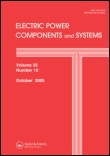
ELECTRIC POWER COMPONENTS AND SYSTEMS
Advancing the Future of Electric Power EngineeringELECTRIC POWER COMPONENTS AND SYSTEMS is a respected peer-reviewed journal dedicated to advancing the field of electrical and electronic engineering, energy engineering, and power technology. Published by Taylor & Francis Inc, this journal boasts a dynamic scope that encompasses a wide array of topics relevant to power systems, including renewable energy, power distribution, and component reliability. With an impact factor indicative of its ongoing contribution to research, it ranks in the Q3 category across multiple engineering disciplines according to the latest metrics. Researchers and professionals will find this journal an invaluable resource, offering insights into the latest developments and innovations in electric power systems from its inception in 2000 to the current era and beyond. Accessible online with Open Access options, it caters to both established experts and emerging scholars looking to deepen their knowledge and foster collaboration within this critical field.
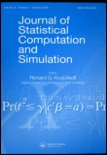
JOURNAL OF STATISTICAL COMPUTATION AND SIMULATION
Unleashing the potential of statistical modeling and simulation.JOURNAL OF STATISTICAL COMPUTATION AND SIMULATION, published by Taylor & Francis Ltd, is a premier journal dedicated to advancing the fields of statistical computation, modeling, and simulation. With a notable impact factor and a ranking in the Q2 quartile across important categories such as Applied Mathematics and Statistics, this journal serves as a vital resource for researchers, practitioners, and students alike. Established in 1972, it has consistently provided cutting-edge research insights, fostering a deeper understanding of statistical methodologies and their practical applications. Although it operates under a subscription model, the journal's commitment to disseminating high-quality research is reflected in its rigorous peer-review process and a broad international readership. With its scope spanning the intersections of statistics, probability, and computational techniques, the journal is essential for anyone looking to stay at the forefront of statistical innovation and practice.
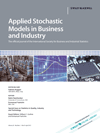
APPLIED STOCHASTIC MODELS IN BUSINESS AND INDUSTRY
Pioneering Solutions for Complex Business ChallengesApplied Stochastic Models in Business and Industry, published by Wiley, is a preeminent journal dedicated to advancing the field of stochastic modeling in various business and industry contexts. With an ISSN of 1524-1904 and an E-ISSN of 1526-4025, this journal serves as a vital platform for researchers and practitioners aiming to leverage stochastic techniques to address complex decision-making and operational challenges. The journal holds prestigious rankings, including Q2 in Business, Management and Accounting, and has converged years spanning from 1999 to 2024. It is distinguished by its wide scope, focusing on all aspects of modeling and simulation, as well as decision sciences and operations research. Although it does not operate as an open-access journal, its significant impact factor and Scopus rankings ensure that the valuable insights published within reach a broad audience. By fostering high-quality research and discourse, Applied Stochastic Models in Business and Industry plays a crucial role in driving innovation and excellence in its fields.

Journal of Reliability and Statistical Studies
Unveiling New Horizons in Statistical and Reliability ResearchJournal of Reliability and Statistical Studies, published by RIVER PUBLISHERS, is a vital resource for researchers and professionals engaged in the fields of analysis, statistics, and numerical methods. With an ISSN of 0974-8024 and E-ISSN 2229-5666, this journal has carved a niche since its inception, converging from 2019 to 2024 to deliver cutting-edge research. The journal is recognized in the academic community, demonstrated by its rankings in Scopus: Mathematics (Analysis: Rank #108/193, Percentile 44; Statistics and Probability: Rank #170/278, Percentile 39; Numerical Analysis: Rank #58/88, Percentile 34). Despite being categorized as Q4 in its field for 2023, it aims to cultivate a robust platform for innovative studies that push the boundaries of reliability and statistical methodologies. Researchers will find value in its commitment to disseminating both theoretical and practical advancements, making it an essential journal for students and scholars striving for excellence in statistical analysis and reliability engineering.

Advances and Applications in Statistics
Empowering Research Through Statistical ExcellenceAdvances and Applications in Statistics is a pivotal academic journal devoted to the dissemination of high-quality research findings in the field of statistics and its diverse applications. Published by PUSHPA PUBLISHING HOUSE, this journal aspires to serve as a dynamic platform for researchers, professionals, and students who aim to share innovative statistical methodologies and explore their practical implications across various disciplines. The journal, with its influential ISSN 0972-3617, fosters open discussion and collaboration within the statistical community, aiming to bridge theoretical advancements with real-world applications. As part of its ongoing commitment to academic integrity and excellence, Advances and Applications in Statistics encourages submissions that not only advance statistical theory but also illustrate their utility in solving contemporary issues in industries such as healthcare, finance, and economics. Although currently lacking an impact factor, the journal's dedication to quality research positions it as a significant contributor to the field. Researchers and academics looking to publish their work in a stimulating and supportive environment will find in this journal a valuable resource.
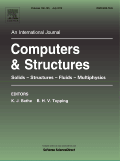
COMPUTERS & STRUCTURES
Advancing Engineering Through Computational InnovationCOMPUTERS & STRUCTURES is a leading interdisciplinary journal published by Pergamon-Elsevier Science Ltd, focusing on the application of computer methods in the fields of civil and structural engineering, mechanical engineering, materials science, and modeling and simulation. With a prestigious history dating back to its inception in 1971, this journal is committed to advancing the knowledge and methodologies that integrate computational techniques with structural analysis and design. Recognized in 2023 with a Q1 ranking across several categories, including Civil and Structural Engineering and Computer Science Applications, COMPUTERS & STRUCTURES emphasizes the importance of innovative research that pushes the boundaries of traditional engineering practices. Although the journal does not currently offer open access, it remains an invaluable resource for researchers, professionals, and students seeking to disseminate and discuss groundbreaking findings that are shaping the future of engineering and materials science. The rigorous peer-review process ensures the publication of high-quality articles that contribute to the global discourse in these critical fields.
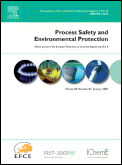
PROCESS SAFETY AND ENVIRONMENTAL PROTECTION
Fostering interdisciplinary solutions for a sustainable future.PROCESS SAFETY AND ENVIRONMENTAL PROTECTION, published by Elsevier, is a premier academic journal dedicated to advancing the fields of chemical engineering, environmental science, and safety management. With an impressive impact factor, this esteemed journal undergoes a meticulous peer-review process and serves as a vital platform for researchers, professionals, and students seeking to disseminate cutting-edge research and innovative practices. Submissions are welcome in a wide scope of topics related to safety, risk, reliability, and environmental engineering, demonstrating its influence as a Q1 journal across multiple categories, including Environmental Chemistry and Safety, Risk, Reliability and Quality. By providing a rigorous analysis of current challenges and solutions in the domain since its inception in 1990, it continues to foster interdisciplinary collaboration and practical applications in the United Kingdom and beyond. With the journal not currently offering Open Access options, subscribers gain exclusive access to pivotal insights that shape industry standards and drive advancements in sustainable practices.
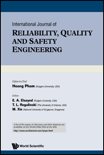
International Journal of Reliability Quality and Safety Engineering
Championing Reliability and Safety in Engineering DisciplinesThe International Journal of Reliability Quality and Safety Engineering, published by World Scientific Publishing Co Pte Ltd, is a leading platform for disseminating cutting-edge research in the fields of reliability, quality, and safety engineering. With an impressive scope that spans across aerospace, electrical engineering, nuclear energy, and industrial manufacturing, this journal serves as a critical resource for researchers and professionals aiming to enhance system dependability and operational excellence. Indexed in Scopus, it holds a respectable Q3 ranking across various categories in 2023, reflecting its growing influence in the academic community. Although currently not open access, it provides ample opportunities for scholars to publish impactful studies from its extensive database, which has evolved since 1996. The journal's commitment to advancing knowledge in reliability and safety engineering makes it a pivotal resource for those dedicated to improving engineering practices and protocols worldwide.

JOURNAL OF QUALITY TECHNOLOGY
Transforming quality management for a better future.JOURNAL OF QUALITY TECHNOLOGY, published by Taylor & Francis Inc, stands as a premier interdisciplinary platform dedicated to advancing the field of quality technology through rigorous scholarship and innovative research. With its ISSN 0022-4065 and E-ISSN 2575-6230, this esteemed journal has achieved a notable impact factor and is consistently ranked in the top quartiles across several categories such as Industrial and Manufacturing Engineering (Q1), Management Science and Operations Research (Q2), and Safety, Risk, Reliability and Quality (Q1), reflecting its significance in these critical areas. Spanning nearly five decades, from its inception in 1969 to the present day, the journal covers a wide array of topics crucial to quality management systems, risk assessment, and operational excellence. Researchers and practitioners alike benefit from its valuable insights and empirical studies, published from its home base in the United States at 530 Walnut Street, Suite 850, Philadelphia, PA 19106. While it is not available as open access, the journal remains a vital resource for those striving to enhance quality performance and foster innovation in their respective fields.